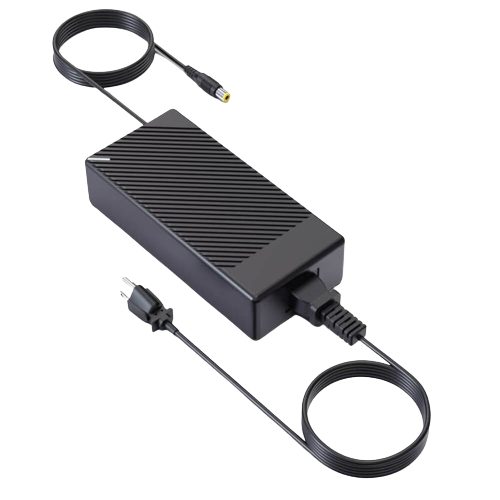Comprehensive Guide to Monocrystalline Solar Panel
Monocrystalline solar panels, renowned for their superior efficacy, robustness, and sustained operational excellence, adeptly capture solar radiance, transforming it into electrical energy for domiciles and commercial establishments.
This discourse aims to elucidate the mechanics of monocrystalline solar panels, delineate their installation prerequisites, expound on their utilitarian deployments, and furnish guidance for the procurement of an optimal solar panel tailored to your specific venture.
What are Monocrystalline Solar Panels?

Monocrystalline solar panels, intricate marvels of photovoltaic ingenuity, consist of a solitary piece of silicon. These solar gems harbor a junction box and intricate electrical tendrils, enabling them to ensnare the sun's radiance and transmute it into a tangible stream of electricity, a feat not easily matched. Renowned for their lofty efficiency, robust endurance, and fiscal prudence that resonates, monocrystalline solar panels reign supreme.
The crafting of monocrystalline solar cells unfolds by cleaving a lone silicon monolith into wafer-thin segments, each meticulously arranged into symmetrical matrices. These photonic gems possess electrical contacts, one poised at their zenith, and another gracing their nadir. They stand united with a junction box, and the sinuous sinews of electric cables, forming a holistic unit poised upon rooftops and poles, harvesting the sun's bounty.
The supremacy of monocrystalline solar panels unveils their ability to conjure up to 20% more solar bounty per square foot than their solar brethren. Their upkeep demands are trifling, and their robustness is nigh invulnerable, rendering them a cherished choice within the residential and commercial domains.
Yet, an admonition accompanies these astral photovoltaic marvels: their pecuniary requisites frequently eclipse those of their brethren. Moreover, their spatial magnitude is circumscribed by the confines of the solitary silicon genesis from which they spring forth. In ventures of solar grandeur, a plethora of panels and a vast tract of terrain become essential.
In essence, the charm of monocrystalline solar panels is enshrined in their magnificent yield on fiscal exertion, a tribute to their prowess and unyielding resilience, rendering them the favored selection in a diverse array of deployments. With scrupulous installation and assiduous upkeep, these solar panels promise to be a steadfast fount of energy for the foreseeable future.
How do Monocrystalline Solar Panels Work?

Monocrystalline solar panels transmute sunlight into electrical energy through the utilization of monocrystalline silicon cells, recognized as the most efficacious variant of solar cell technology. The fabrication process entails the precision slicing of a solitary silicon crystal into wafer-thin sections.
As the radiant beams of the sun illuminate the solar panel's surface, the photons within the light interact with the silicon atoms housed within the solar cell. This interaction results in the liberation of electrons from their atomic confines, setting them on a journey coursing through the cell's interior, eventually congregating within a wire circuit.
This orchestrated flow of electrons engenders an electrical current capable of energizing electrical apparatus or being stashed away within a battery for subsequent application.
The remarkable efficiency inherent to monocrystalline solar panels can be attributed to the exceptional purity of the silicon harnessed in their production. Monocrystalline silicon boasts an inherently homogeneous structure, a characteristic distinct from other silicon varieties.
This unique structure permits superior electron mobility across the solar cell, culminating in a heightened power output per square foot of solar panel real estate compared to alternative solar panel technologies.
Monocrystalline Solar Panels vs Polycrystalline Solar Panels
In the realm of photovoltaics, an array of solar cell varieties exists, among which monocrystalline and polycrystalline stand prominently. While both possess the capability to generate electrical energy, they distinguish themselves through their operational characteristics. Monocrystalline solar cells, characterized by their singular silicon crystal composition, outshine their polycrystalline counterparts in terms of efficiency.
Monocrystalline panels are adept at orchestrating the movement of electrons, thanks to their homogenous crystalline composition. Additionally, these panels demonstrate formidable tenacity in the face of thermal oscillations, making them a preferred selection for extended operational durations.
OUPES Portable Solar Panel is an example of monocrystalline silicon solar panels. Its core is monocrystalline silicon cells known for their excellent quality and long life. Therefore, they have efficient energy conversion and are designed to withstand various climatic conditions. , operates perfectly within the temperature range of -20°C to 85°C (-4°F to 185°F).
The process of adjudicating between monocrystalline and polycrystalline solar cells pivots on the unique exigencies of the project and fiscal prudence. Monocrystalline panels, lauded for their paramount efficiency and robustness, command a premium in terms of cost.
In contrast, polycrystalline cells present a budget-friendly option, albeit with a concession in efficiency. Therefore, a thorough and discerning assessment is crucial in selecting the cell variant that best harmonizes with the specific goals of your endeavor.
Installation and Maintenance of Monocrystalline Solar

Monocrystalline photovoltaic arrays offer a streamlined integration process, owing to their pre-configured composition. For maximal energy harnessing, it's essential to anchor these panels in a manner that aligns them directly with the sun's trajectory. Establishing a zone free from shade or obstructions is vital to ensure a ceaseless cascade of solar illumination.
The upkeep of monocrystalline solar arrays is notably undemanding, attributed to their sturdy construction, designed to endure diverse climatic adversities. Maintaining their optimal functionality involves the occasional application of tepid water and a soft cloth for cleaning. It's crucial to eschew harsh cleaning substances, as they can cause detriment to the fragile photovoltaic cells.
Examples of Monocrystalline Solar Panel Applications
Monocrystalline solar panels are deployed in a myriad of contexts. Notably, they are integral to both domiciliary and mercantile rooftop solar arrays, as well as nomadic solar generators for wilderness sojourns and remote dwellings.
Additionally, these panels are pivotal in large-scale energy production for manufacturing hubs and agrarian enterprises. Their utility extends to energizing aqua pumps, communication networks, pathfinding apparatuses, and a spectrum of additional contrivances.
For example, the OUPES 240W Portable Solar Panel is made of lightweight monocrystalline silicon material. Its efficiency is as high as 22% and weighs only 18.48 pounds. It is very easy to carry. When used with the OUPES solar generator, it can power refrigerators, TVs, etc. It provides a stable energy supply for consumption equipment and is suitable for various scenarios such as home, camping, and adventure.
Choosing the Ideal Solar Panel for Your Project
Selecting the appropriate solar panel for your project necessitates meticulous deliberation. In the realm of photovoltaic panels, each variation possesses its own set of advantages and drawbacks.
Monocrystalline solar panels boast a superior level of efficiency when juxtaposed with their polycrystalline counterparts. Despite carrying a slightly heftier price tag, they prove to be highly cost-effective, and their installation is facilitated by their diminutive and lighter battery configurations.
Concerning efficacy and operational prowess, monocrystalline solar panels oftentimes garner favor over their polycrystalline counterparts. Their capacity to harness greater amounts of solar energy, because their cells originate from a single crystal, bestows upon them an augmented efficiency quotient.
In the realm of solar energy, monocrystalline solar panels emerge as paragons of durability, withstanding the harshest of environmental adversities, while also boasting significantly protracted lifespans when juxtaposed with their polycrystalline
Conclusion

In the realm of harnessing solar energy, we confront the juxtaposition between monocrystalline solar panels and polycrystalline solar cells. Monocrystalline solar panels are celebrated for their extraordinary efficiency, accompanied by a conspicuous cost-effectiveness advantage over their polycrystalline counterparts.
Conversely, polycrystalline solar cells, although marginally less efficient, attract the attention of those navigating within the confines of financial constraints. Ultimately, the choice between monocrystalline and polycrystalline solar panels pivots on the specific requisites and individual predilections of the user.
FAQ about Monocrystalline Solar Panel
How long do monocrystalline solar panels last?
In the sphere of photovoltaic innovation, monocrystalline solar panels often boast a remarkable duration of functional efficacy, typically ranging between 25 to 30 years. Occasionally, these figures are even surpassed. To prolong the robustness of these solar marvels, it's imperative to engage in diligent upkeep and precise cleansing rituals.
Can single-crystal solar panels be used in cold climates?
In locales beset by wintry rigor, the prowess of monocrystalline solar panels becomes manifest. Remarkably, these panels exhibit augmented efficiency in the embrace of frost, outstripping their efficacy in sweltering climes. Yet, the precision in their emplacement, coupled with the imperative to thwart the accumulation of snow or frost, stands as a paramount concern.
How much energy can a monocrystalline solar panel produce?
The quantum of vigor captured by a monocrystalline photovoltaic slab hinges on an array of determinants, including the slab's proportions, its operational efficacy, and the degree of solar irradiance it absorbs. Typically, a monocrystalline solar slab is capable of producing electric currents in the range of 250 to 400 watts.
Are monocrystalline solar panels more expensive than other types of solar panels?
In the sphere of solar energy harnessing, monocrystalline solar panels, notwithstanding their elevated cost when juxtaposed with other types such as polycrystalline and thin-film, demonstrate unparalleled efficiency and an extended lifespan. This attribute frequently renders them a more financially sound selection for those contemplating long-term energy investments.





















